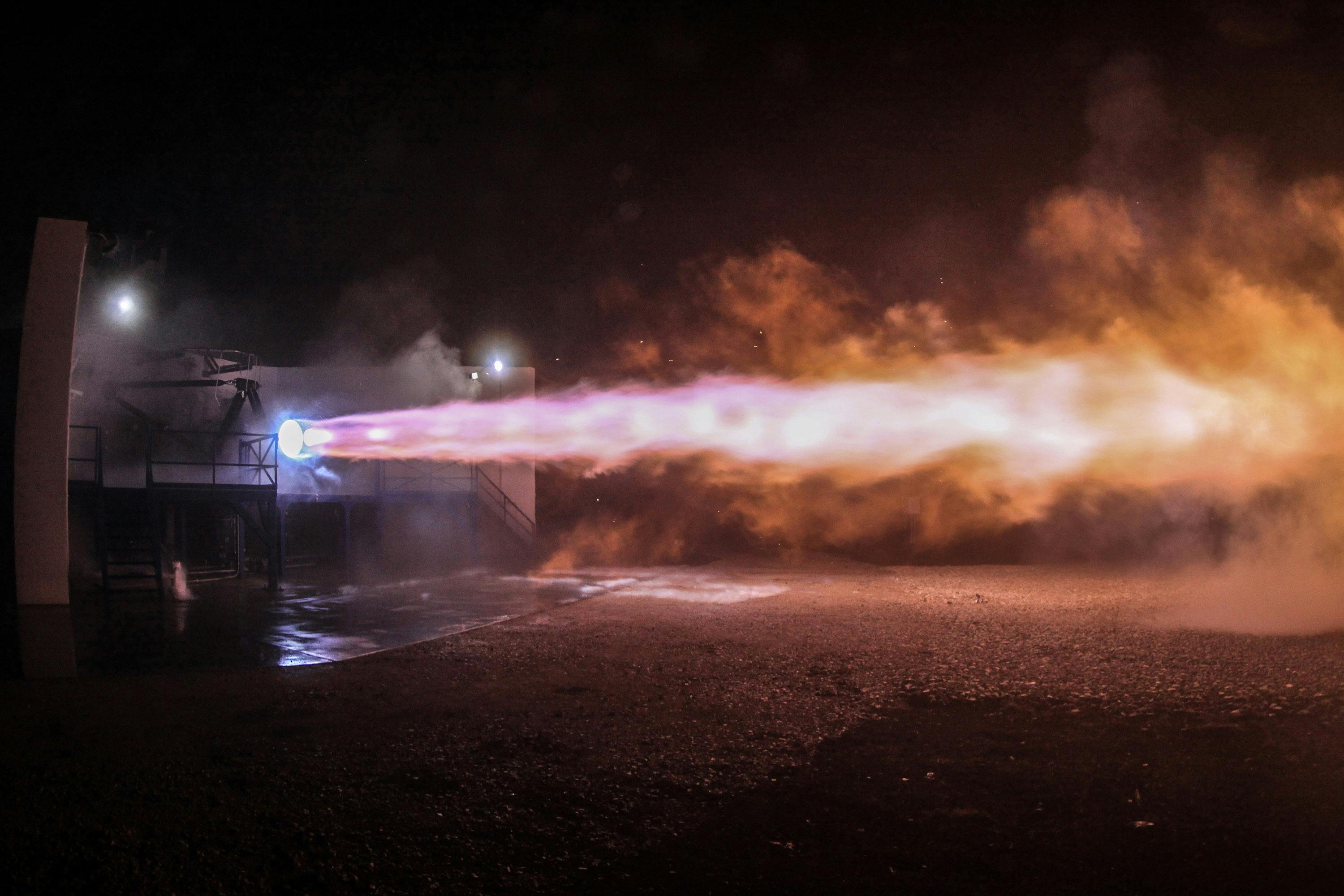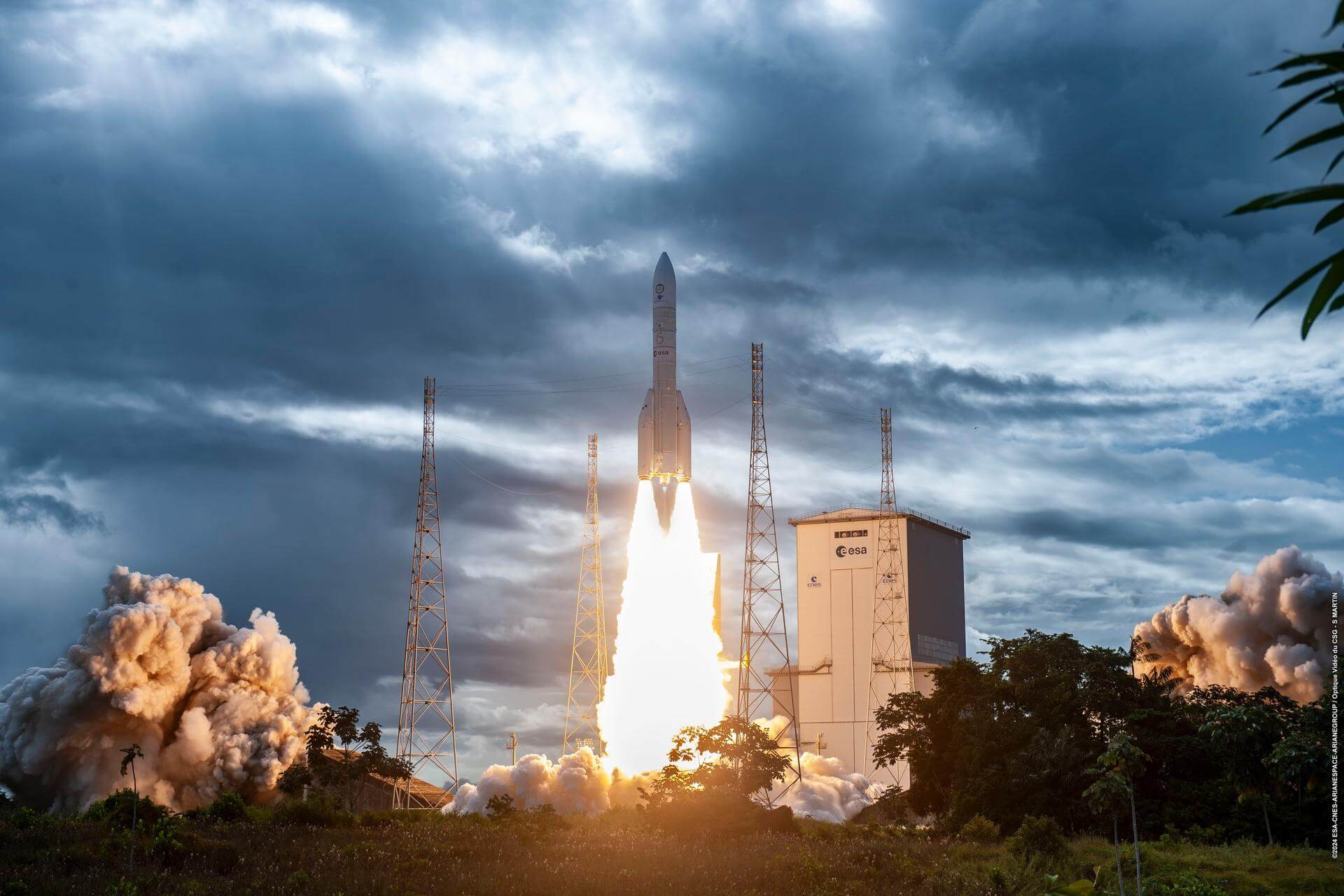· space brief · 5 min read
Space Brief 15 Nov 2024
Today's Space Brief covers China's Haiyang-4 satellite launch, Intuitive Machines' Artemis infrastructure proposals, deployment of the GREMLIN sensor suite, and more.

📄Top Stories
China has successfully launched its Haiyang-4 oceanography satellite, marking its 55th orbital launch of 2024. Intuitive Machines has called for a shift in NASA’s Artemis mission strategy to prioritize infrastructure. The Pentagon is preparing to deploy its GREMLIN sensor suite at a national security site. Additionally, U.S. policies face challenges in space collaboration efforts under the ‘America First’ approach.
📰Detailed Coverage
China Launches the Haiyang-4 Oceanography Satellite
On November 13th, China launched the Haiyang-4 satellite aboard a Long March 4B rocket to enhance its oceanic monitoring capabilities. This mission signifies China’s continued investment in space-based environmental surveillance and their 55th mission in the year 2024 alone.
The Haiyang-4 satellite is specifically designed for oceanography, with tools to measure sea surface height and sea state, which are vital for climate research and maritime navigation safety. Tracking Haiyang-4’s trajectory and operations will be crucial for understanding its impact on data collection and oceanography advancements.
Read the full story: SpaceNews
GREMLIN Sensor Suite Deployment by Pentagon
The Pentagon’s UAP office is prepping the GREMLIN sensor suite for its first extended deployment. This suite, designed to detect and characterize unidentified aerial phenomena, will undertake a significant 90-day mission at a national security site soon.
Previously tested successfully in March, GREMLIN’s deployment illustrates a ramp-up in defensive technology aiming to identify potential threats in aerial and space environments. This deployment could pave the way for new satellite tracking features focusing on anomaly identification, vital for defense and surveillance applications.
Read the full story: Breaking Defense
Intuitive Machines’ Call for Artemis Mission Reform
Intuitive Machines has recently suggested a strategy pivot towards an “infrastructure-first” focus within NASA’s Artemis lunar program. Citing budgetary constraints and mission delays, they advocate for the development of foundational space infrastructure to better support future lunar expeditions and commercial ventures.
Early infrastructure investments could alleviate future challenges by providing necessary support structures for in-depth lunar exploration. This approach underscores the importance of strategic planning to mitigate delays and enhance long-term mission sustainability.
Read the full story: SpaceNews
’America First’ Faces Upcoming Tests in Space Collaboration
The ‘America First’ policy is undergoing scrutiny regarding international space cooperation. As space becomes increasingly collaborative, aligning national policy with global partnership efforts is becoming imperative, posing challenges to unilateral strategies.
Former U.S. Space Command officials emphasize the importance of collaborative efforts in space exploration, suggesting that isolation could hinder progress. The policy’s impact on international satellite operations and shared technological advances remains a focal point for future space diplomacy.
Read the full story: SpaceNews
Nuclear Power Considered for Enhanced Military Base Security
Two former officials are advocating for increased use of nuclear power at U.S. military bases, touting its reliability and potential for enhancing national security. They highlight the potential for nuclear energy to provide a robust, sustainable power source for critical defense infrastructure.
This push for nuclear power could play a significant role in ensuring that military bases remain operationally secure against global energy volatility, further strengthening the strategic capabilities of the nation’s defense setups.
Read the full story: Breaking Defense
🛰️Satellite Spotlight
- Satellite Name: COSMOS 1305
- NORAD ID: 12818
- Launch Date: 1981-09-15
- Mission: COSMOS 1305 is part of the Russian Molniya communications satellite program, designed to provide long-distance telephone and telegraph services.
- Orbit: Inclination: 62.8117°, Period: 263.64 minutes, Eccentricity: 0.4878499
- Operator: NPOPM/MSVYAZ
- Fun Fact: The satellite’s Molniya orbit is specifically engineered to maximize its time over Northern Hemisphere regions, making it crucial for Russian communications.
Current TLE Data:
1 12818U 81088A 24315.32555514 .00000279 00000-0 98166-3 0 99991
2 12818 62.8117 314.6762 4878499 254.9341 47.9404 5.46195117860868Track this satellite in real-time on our web app: Track COSMOS 1305
🚀 Upcoming Space Launches
November 15
- China Aerospace Science and Technology Corporation Long March 7:
- Tianzhou-8 from Wenchang Space Launch Site, People’s Republic of China (15:03 UTC) Seventh cargo delivery mission to the Chinese space station.
November 17
- SpaceX Falcon 9:
- Optus-X from Kennedy Space Center, FL, USA (21:29 UTC) An unannounced geostationary communication satellite built by Northrop Grumman, nominally for the Australian telecommunications operator Optus.
November 18
-
SpaceX Falcon 9:
- Starlink Group 9-12 from Vandenberg SFB, CA, USA (05:47 UTC) A batch of satellites for the Starlink mega-constellation - SpaceX’s project for space-based Internet communication system.
-
SpaceX Falcon 9:
- GSAT-20 from Cape Canaveral SFS, FL, USA (18:31 UTC) GSAT-20 is an Indian geostationary Ka-band high-throughput communications satellite, featuring Electric Propulsion for efficiency.
-
SpaceX Starship:
- Integrated Flight Test 6 from SpaceX Starbase, TX, USA (22:00 UTC) Sixth test flight of the two-stage Starship launch vehicle.
November 20
- Rocket Lab HASTE:
- Leidos-2 from Wallops Flight Facility, Virginia, USA (00:00 UTC) Second sub-orbital launch of Electron of the Hypersonic Accelerator Suborbital Test Electron (HASTE) program for Leidos and Dynetics.
November 21
-
Russian Federal Space Agency (ROSCOSMOS) Soyuz 2.1a:
- Progress MS-29 (90P) from Baikonur Cosmodrome, Republic of Kazakhstan (12:22 UTC) Progress resupply mission to the International Space Station.
-
SpaceX Falcon 9:
- Starlink Group 6-66 from Cape Canaveral SFS, FL, USA (15:53 UTC) A batch of satellites for the Starlink mega-constellation - SpaceX’s project for space-based Internet communication system.
November 23
- Rocket Lab Electron:
- Ice AIS Baby (Kinéis 11-15) from Rocket Lab Launch Complex 1, Mahia Peninsula, New Zealand (03:49 UTC) Third batch of five satellites for the French Kinéis IoT constellation designed to operate with 25 nanosatellites of 30 kg each.
Note: Launch dates and times are subject to change due to technical or weather considerations.

Maurice Stellarski





